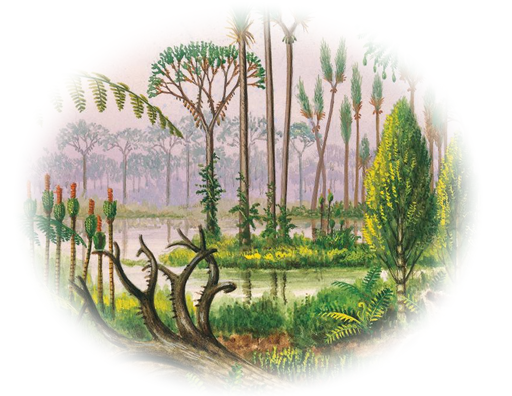Life Science Enhancement - Chemistry 3
Content
- Fossil fuels
- Organic chemistry - hydrocarbons
- Organic chemistry - addition polymerisation
- Natural polymers - glucose, starch and cellulose
- Hydrolysis of condensation polymers
- Combustion equations and incomplete combustion
- Saponification
Scheme of work
Fossil fuels
What are fossil fuels
Fossil fuels are natural resources formed from the remains of plants and animals that died millions of years ago.
The most common fossil fuels are what remains of the breakdown products of the molecules of life, these are:
- Natural gas
- Oil
- Coal
The formation of fossil fuels
During the carboniferous period. which spanned between 360 and 300 million years ago, the Earth was covered with large forests and the oceans were teeming with small microorganisms.

All of these life forms gained their energy from photosynthesis, and built their structures using the abundant carbon dioxide and water in the atmosphere.
6CO2(g) + 6H2O(l) → C6H12O6(s) + 6O2(g)
Carbon dioxide and water was combined into glucose, using the energy of the sun, and then the glucose was combined into starch and cellulose to build the structures of the trees and plants.
nC6H12O6(s) → [C6H10O5]n(s) + nH2O(l)
The vegetation also needed other elements, such as nitrogen, phosphorus and sulfur, which it obtained from the soil, to build the proteins and nitrogenous bases essential for life.
When the plants eventually died, they fell on the remains of other plants and over millions of years huge amounts of dead vegetation built up.
The same processes occurred in the oceans, with layers of dead animal and vegetable matter building up over the millenia.
During the course of millions of years the Earth moved and pushed these layers underground where they were subject to pressure and temperature in the absence of oxygen, which caused the large polymeric molecules to slowly break apart.
We can emulate the formation of fossil fuels using the following experimental procedure
Fractional separation of crude oil
Crude oil is separated into different fractions according to boiling range
How do we use fossil fuels
Fossil fuels are mainly used for two purposes:
- Energy generation
- Chemical feedstock
Consequences for the future